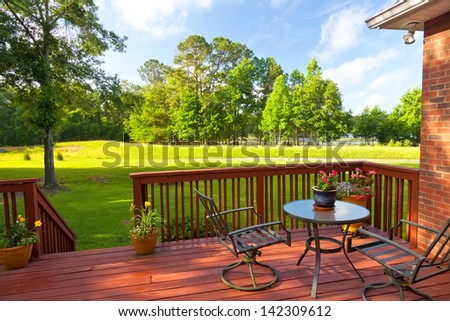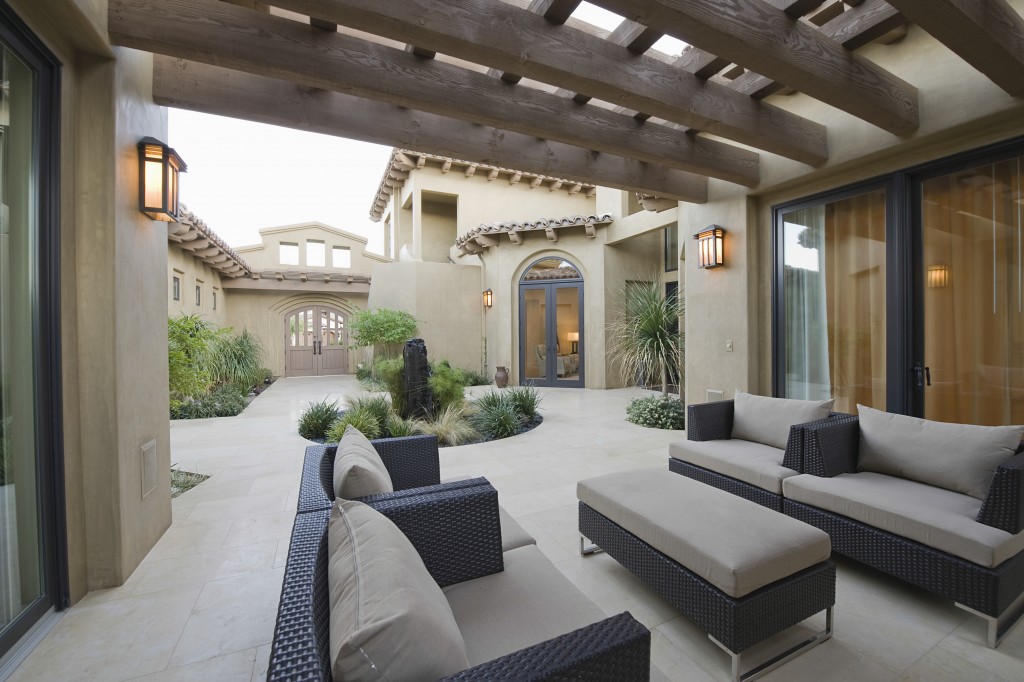People often confuse decks with patios. After all, they’re both outdoor extensions that can raise your property’s market value and curb appeal. Learning the difference between the two can help you choose the better option for your home.
Patios
Patio is a Spanish word that means backyard or back garden. It’s the traditional open inner court of a Spanish-style house. In contemporary homes, patios are outdoor spaces used for entertaining, dining, or relaxation. They are usually paved areas connected to the main house or garden.
Some patios have roofs and protective covers while others are bare and open. Some are freestanding while some are linked to the house. Multilevel patios, usually linked by paths or steps, are great for properties built on a slope or large lot. U-shaped and L-shaped patios, on the other hand, can be accessed from different rooms while wraparound patios are usually attached to the back and sides of a house. Regardless of your chosen style, a well-designed patio can extend your living space and add value to your property.
You can have one large patio or smaller ones depending on the size of your outdoor space. A patio can run the extent of a house, curve around corners, or mimic your home’s contours.
Most homeowners opt for concrete patio designs, but you can also use other materials like tile, brick, and stone. Your patio should be leveled with your interior flooring to make it look like a natural extension of your home.
Decks

The main purpose of a deck is to take advantage of a view. They take the form of open porches or platforms that feature some type of safety railing.
Unlike patios, decks are not built directly on the ground. Instead, a support system is used to hold up the addition. Decks can be added to a home’s ground floor, upper rooms, or even on a rooftop.
Decks are typically made of vinyl or composite wood including cedar, redwood, and pressure-treated pine.
If you are building a slightly elevated deck, use composite decking or artificial wood than natural timber. Unlike natural wood which can easily rot when placed near the ground, composite decking is resistant to termites and does not splinter or bend. It also requires very little to no maintenance, so you don’t have to worry about additional repair costs.
Which is better?
As with any home extension, your budget will likely affect your choice.
The cost of a 200-square-foot concrete patio can run between $740 to $840, while the average deck can cost up to $8,300. While patios are usually cheaper to install, the cost of the project will still depend on several factors including materials, location, size of the project, and embellishments (railings, seating, built-in barbecues).
It’s also important to consider the slope of your yard. Since patios are built directly on the ground, it would be difficult to construct one on uneven ground. If your house lies on a sloping block, building a deck would be cheaper than creating a level foundation for a patio.
Professionally installed decks and patios let you enjoy the outdoors all year-round. They can also be customized to match your home’s aesthetic. Whichever option you choose, both are useful fixtures that offer unlimited possibilities for recreation and relaxation.
